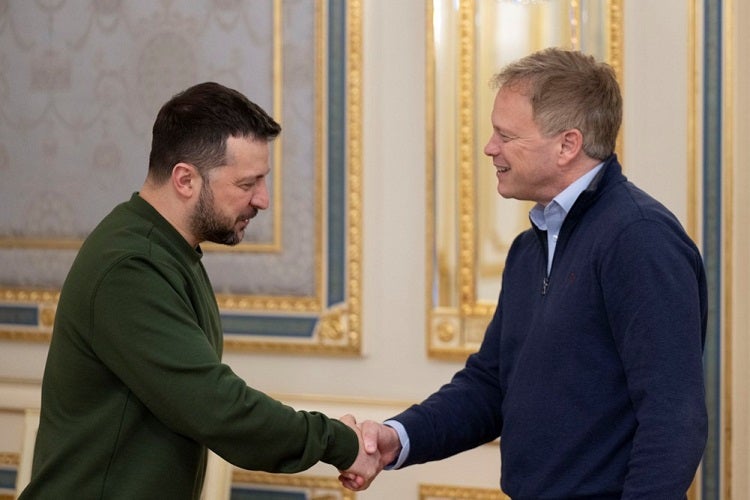
During a visit to Kyiv, the UK Defence Secretary, Grant Shapps, announced that Britain will build on its recent efforts to supply uncrewed aerial vehicles (UAVs) to Ukraine.
He promised an increase of 10,000 more, mostly first-person view (FPV), one-way-attack drones as well as surveillance and maritime drones.
The UK Ministry of Defence (MoD) specified that the UAVs “have been researched and developed in the UK.”
This expansion of the UK Government’s previous £200m ($256.5m) drone package, outlined by the Prime Minister, Rishi Sunak, in January 2024, will now grow to a value of £325m. The cost of this package comes from a wider Government pledge of £2.5bn funds earmarked for Ukraine throughout 2024-25.

As lessons from the conflict in eastern Europe point to the asymmetrical advantage that such assets provide – in circumventing Russian air defence and the critical role the technology plays in surveillance and offensive measures – the MoD has latched onto the concept.
The global industry is concious of the significance of drones, a point that was recently enshrined in the MoD’s Drone Strategy, unveiled by the Minister for Defence Procurement, James Cartlidge, several weeks ago.
How well do you really know your competitors?
Access the most comprehensive Company Profiles on the market, powered by GlobalData. Save hours of research. Gain competitive edge.

Thank you!
Your download email will arrive shortly
Not ready to buy yet? Download a free sample
We are confident about the unique quality of our Company Profiles. However, we want you to make the most beneficial decision for your business, so we offer a free sample that you can download by submitting the below form
By GlobalDataDeploying drone technology in Ukraine
Ukraine’s Armed Forces have proven the effectiveness of the drone model in every temporal domain, with marked success in the Black Sea, where it has deployed one-way-attack uncrewed surface vessels to destroy ships in Russia’s Black Sea Fleet, including the corvette Ivanovets and the large amphibious ship Caesar Kunkiov.
According to some estimates, Ukraine has incapacitated around 30% of Russia’s once formidable Black Sea Fleet, which had earlier consolidated the Moscow’s occupation of the Crimean peninsula.
However, concerns are growing that Russia is playing a much longer game. The Institute for the Study of War cited the Lithuanian defence intelligence on 8 March, noting that Russia has the capability to continue sustaining the current tempo of its war in Ukraine and will likely have the capability to gradually expand its military capabilities in the near-term.
Nevertheless, Ukraine’s asymmetric methods – enabled by the considerably cheaper UAV solution – provides a longer-term response to such a Russian strategy for the war against Ukraine.



